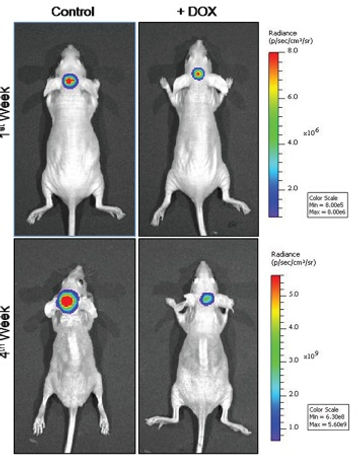Shirsat Lab
Department of Neuro-oncology

Dr. Neelam V. Shirsat
M. Sc. (Biochemistry) ,University of Mumbai
Ph. D. (Biochemistry), Cancer Research Inst, Mumbai
Postdoctoral work: Wistar Institute, Philadelphia
Tata Inst of Fundamental Research, Mumbai
Brain tumours are one of the leading causes of cancer related deaths. Glioblastoma (GBM) and Medulloblastoma are two high grade malignant brain tumours that differ strikingly in their clinical behaviour and underlying biology. We have been using high throughput genomic technologies to identify genetic alterations and delineate their role in pathogenesis of medulloblastomas. While the genetic alterations in GBMs are largely understood, their complexity accompanied by the intrinsic resistance and invasive potential of GBMs poses enormous challenge to identification of therapeutic targets in GBMs. We have been investigating the molecular basis of the intrinsic resistance of GBM cells to cell death.
Molecular sub-groups of medulloblastomas and correlation with clinical characteristics
Genome wide expression profiling studies including our own study has demonstrated that medulloblastoma is comprised of 4 core molecular subgroups viz. WNT, SHH, Group 3 and Group 4. We have molecularly classified a set of 103 medulloblastomas from the Indian subcontinent. WNT, SHH, Group 3 and Group 4 accounted for 22 %, 29 %, 20 %% and 28 % of the tumor tissues respectively as against the reported incidences of 11%, 28%, 27% and 34% based on the meta-analysis of the medulloblastoma data from the American and European subcontinent. The higher incidence of the WNT subgroup and relatively lower incidence of Group 3 tumors is partly accounted by the higher representation of older children and adults who together account for 51% of the tumors in the present cohort. Nonetheless, frequency of WNT subgroup tumors is much higher than reported so far even for these age groups with as many as 40% older children and 35% adults in the present Indian cohort belonging to the WNT subgroup. Another striking feature of the Indian cohort is lack of Group 4 medulloblastomas in adult patients and Male to Female ratio of 9:1 that is substantially higher than the reported ratio of 2:1. We have also carried out Next Gen sequencing of WNT subgroup medulloblastomas that has identified several novel mutations including mutations in chromatin modifying genes.
Differential microRNA expression in molecular subgroups of medulloblastomas: role in pathogenesis, diagnosis and therapeutic potential
We have carried out microRNA profiling of medulloblastomas in parallel with genome-wide expression profiling of protein-coding genes that identified differential miRNA expression in the four molecular subgroups of medulloblastomas, with the most distinctive miRNA profile of WNT subgroup tumours. Differential expression of eleven miRNAs across the four subgroups was validated by real-time RT-PCR in a set of 103 medulloblastomas. The WNT subgroup tumors showed significant (p < 0.0001) over-expression of miR-193a-3p, miR-224, miR-148a, miR-23b, miR-365, and miR-10b as compared to all other subgroup medulloblastomas. A real-time RT-PCR assay evaluating the expression profile of 12 protein-coding genes and 9 miRNAs was developed for molecular classification of medulloblastomas with an overall accuracy of 97%. The assay is rapid, simple and inexpensive. It is particularly useful for the classification of FFPE tumor tissues, wherein the expression profile of protein-coding genes is often less reliable due to RNA fragmentation. Further, Non-WNT, non-SHH medulloblastomas over-expressing miR-182 or under-expressing miR-592 were found to have significantly inferior survival rates indicating utility of these two miRNAs as markers for risk stratification of medulloblastomas. We have been studying functional role of several miRNAs in medulloblastoma biology. In particular, miR-193a, an miRNA up-regulated specifically in WNT subgroup medulloblastoma was found to inhibit proliferation, anchorage-independent growth and inhibit tumourigenicity of medulloblastoma cells indicating its therapeutic potential.




Glioblastomas are refractory to the current mode of treatment primarily due to their inherent resistance to radiation and chemotherapy.
Medulloblastoma, a common pediatric malignant brain tumor consists of four molecular subgroups viz. WNT, SHH, Group 3 and Group 4. MiR-148a is over-expressed in the WNT subgroup tumors, which have the lowest incidence of metastasis and excellent survival among all medulloblastomas.
MiR-148a inhibits invasion and tumorigenic potential of medulloblastoma cells
Micro RNAs as therapeutic agents
MiR-206 is Downregulated in Medulloblastoma Subgroups and Its overexpression Is Necessary for growth inhibition of Medulloblastoma cells
MiR-206 expression was found to be downregulated in medulloblastomas belonging to all the four molecular subgroups as well as in established medulloblastoma cell lines.
Collaborators:
From ACTREC:
Dr. Ali Asgar Moiyadi, Associate Proffesor, Neurosurgeon
Dr.Tejpal Gupta, Assistant Professor, Radiation Oncology
Dr. Arvind Ingle, Officer-in-Charge, Laboratory Animal Facility
Dr. Rahul Thorat, Scientific Officer, Laboratory Animal Facility
From Tata Memorial Hospital, Mumbai:
Dr. Rakesh Jalali, professor, Radiation Oncology Convener , Neuro Oncology Group
Dr. Epari Sridhar, Asst. Professor & Asst. Pathologist
From NCCS Pune:
Dr. Anjali Shiras

KS-149, Tata Memorial Centre,
Advanced Centre for Treatment,
Research and Education in Cancer
Kharghar, Navi Mumbai - 410 210, INDIA.

Call Us:
Office Phone- 91-22-27405016
Laboratory Phone 91-22-27405000
Ext: 5369
Fax: 91-22-27405085